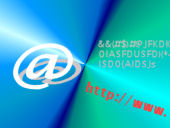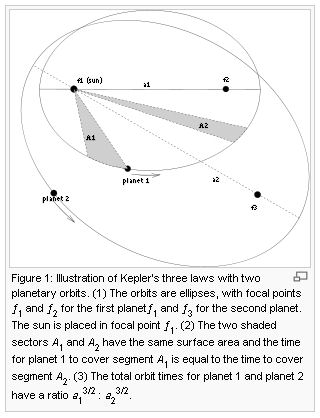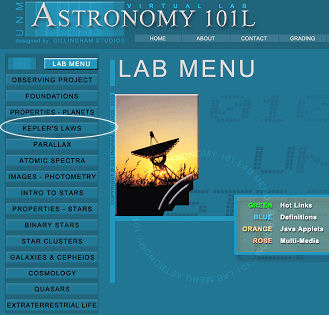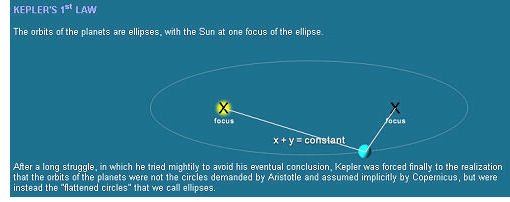Every student who enters upon a scientific pursuit, especially if at a somewhat advanced period of life, will find not only that he has much to learn, but much also to unlearn. — Sir John Herschel, Outlines of Astronomy (1871), 11th edn.
A Brief Introduction
 Welcome to A Universe in Time's Site of the Month for September and October. This month's feature is in the category of Online Education & Outreach and is from the University of New Mexico's Department of Physics and Astronomy (UNM), a virtual lab entitled Astronomy 101L. I wish to personally thank its current teaching lab supervisor and the individual who has helped to make this month's issue possible, William Miller.
Welcome to A Universe in Time's Site of the Month for September and October. This month's feature is in the category of Online Education & Outreach and is from the University of New Mexico's Department of Physics and Astronomy (UNM), a virtual lab entitled Astronomy 101L. I wish to personally thank its current teaching lab supervisor and the individual who has helped to make this month's issue possible, William Miller.
Astronomy 101L is an entry level science course for students at the University of New Mexico which is made up of 15 main lab lessons, each divided into two or more subsections that take the student through a progressive series of instructional material and demonstrations covering subjects that include Kepler's Laws, Spectra, Star Clusters, Cosomology and more. The program finishes with a section on Extraterrestrial Life, which looks at astronomer Frank Drake's famous formula for putting into prospective the question, are we alone? At left is a screen shot of the main entry page from the University's website.
As with many interactive web pages today, the lab runs best under one of the more recent versions of your web browser—Netscape Navigator version 6.x may not work correctly—and requires that you have JAVA enabled. Notes the lab supervisior, William Miller, "The public site is sometimes a little behind the teaching site as far as updates and corrections go, but fairly close." * What that said, let us take a closer look at this month's featured site, Virtual Lab, Astronomy 101L from the University of New Mexico's Department of Physics and Astronomy.
* The Virtual Astronomy Lab 101L course was tested by the author under Windows XP using the following browsers: Opera 9.52, IE 8 Beta2 (8.0.x), Mozilla Firefox 3.0.4 and Safari 3.2.1 (525.27.1) for the PC/Windows based operating system. Safari was the only browser which had any problems with web site navigation under the PC/Windows XP platform but the browser ran well under its native system — Mac OS X.
The World Wide Web and the Internet
Internet Information and Online Education
Knowledge Internet Style
The teaching of astronomy would be useful because it raises "fundamental questions about ourselves and our mission" and cultivates a "sense of awe, interdependence, and global responsibility." — The End of Education: Redefining the Value of School by Neil Postman, 1996 [1]
One of the truely beneficial aspects of the
World Wide Web was also the driving force behind its creation, the sharing of knowledge and information made readily accessible for the benefit of science. In their article,
Science and Invention - Why Was The Internet Created? the website
enotes.com says:

The Internet was created in the late 1960s so that U.S. Department of Defense researchers could share information with one another and with other researchers. The Advanced Research Projects Agency developed the Internet; its users, who were mostly scientists and academics, soon saw the power of the new technology: Wires linking computer terminals together in a "web" of networks allow people anywhere in the world to communicate over the computer.
Though it would eventually developed into the new market place of business, by 1998 101 million people seemed to feel that the internet was the place to be, becoming users and going "online"; however, not all were there to shop. Many private users opened their browsers to both share and to learn and in this they were not alone. Since 1992, almost every institution of science and education has gone on line, sites like
APOD,
NASA and
The CfA (Center for Astrophysics) that produce many of the greatest images from our universe plus the latest astronomical research or discoveries. These were also joined by the institutions of learning like
MTU and
CalTech, universities which made use of the wealth of scientific research in order to present the cosmos not only as an orderly, harmonious whole but also as a relevant and greater part of nature to the everyday thinker. [2]
As part of the growth of the World Wide Web and Internet, science institutions, universities, students and amature astronomers across the world began writing and making available through their own private and public URLs, a plethora of small java applications, downloadable programs and interactive applets demonstrating the use of scientific tools and theories such as
the H-R Diagram,
Kepler's Three Laws and
the Doppler Effect. At the same time, the concept of distant learning, that is, education via the internet also developed to the point that today, it is not only a useful medium of knowledge for many but a viable option for the working household and in some cases, as a supplemental learning tool for the busy student, giving rise to a wealth of talented, creative and interactive programs such as the
University of New Mexico's Virtual Astronomy Lab 101L.
Knowledge Internet Style

Having ventured into the halls of science, both in the real world and online, I have often found that nothing short of the classroom enviroment with a "live" instructor would do. Additionally, the same benefits of experience one accquires and the resultant satisfaction of achievement from this "hands-on" approach cannot be easily duplicated, if at all, over an internet connected computer. That said, the Internet is the World Wide Web's encyclopedia, text book or other interactive reference source; a tool, pure and simple—but what a tool it is!
fn1
For example, when we are told that a
planetary orbit is an ellipse with the sun at its focus, that
a line joining a planet and the sun sweeps out equal areas during equal intervals of time or that
the square of the orbital period of a planet is directly proportional to the cube of the semi-major axis of its orbit, we are speaking of the three laws of planetary motion that were discovered by German mathematician, astronomer and astrologer
Johannes Kepler. If we were to illustrate these laws we would see something like our image at
right, a diagram of Kepler's Three Laws from the
Wikipedia website. [3]
The image and accompanying text are an accurate illustration that together describe the motion of any two bodies that are orbiting each other. Simple; but how can we really be sure that we understand what is being described here? And if not, how do we decipher this diagram so as to give each law of Kepler's understanding? While it is true that this has been done for us at the source Wikipedia—very nicely I should add—it can become, like any good encyclopedia, technical and somewhat one-dimensional. So, if we really wished to gain an understanding in a way that is more animated, is there an alternative? Are there programs that demonstrate for us any of these laws? The answers are
yes; and If you're thinking that astronomy may be something you wish to pursue academically, then you're in luck as we're headed over to the University of New Mexico's virtual lab, Astronomy 101L to preview their interactive science program.
fn2
Footnotes
1. While the terms World Wide Web and Internet have developed a common usage in today's vernacular, they are not synonymous. "The World Wide Web, or simply Web, is a way of accessing information over the medium of the Internet...The Internet is a massive network of networks, a networking infrastructure." see The Difference Between the Internet and the World Wide Web, published February 29, 2008 at the internet.com Webopedia page. Copyright © 2009 WebMediaBrands Inc.
2. It should be noted that the virtual astronomy lab is an educational based program within the science curriculum of the University of New Mexico and not intended as a "self-educational" offering. Though the program is accessible to the general public via the internet, the intent of the lab is educational coursework for credit and as such, certain sections throughout this program are accessible only to students enrolled at the university.
The Internet Classroom of Astronomy 101L
Kepler's Three Laws
A Virtual Lab Lesson
For so many centuries had the fetish of circular motion postponed discovery. It was natural that Kepler should assume that his laws would apply equally to all the
planets, but the proof of this, as well as the reason underlying the laws, was only given by Newton, who approached the subject from a totally different standpoint. — by Walter W. Bryant, Kepler, 1920 [4]
The Virtual Lab Experience — Kepler's Three Laws


After entering the lab and clicking on the button
START LABS, the student is presented with the menu page shown at
left, a screen shot of the Virtual Lab and the 15 astronomy subjects covered by this program. In our example, clicking on the menu button
Kepler's Laws (
white circle) opens a new window entitled
Lab 3, a part of which is shown
right. The
Introduction page provides the student with a
Historical Background link as well as the
Purpose and
Instructions for this lab.
Note: The student is invited to read the historical background of both
Kepler and
Tycho Brahe but this is not required, though highly recommended by this author for those unfamiliar with the lives of either.
The First Law
The first virtual lecture is entitled
Kepler's 1st Law and clicking on this button (
yellow circle, right) opens a new page containing an animated graphic demonstrating the law that
a planetary orbit is an ellipse with the sun at its focus, as shown
below. The animation represents both Copernicus' theory of a sun-centered solar system and Kepler's discovery that the movenment of the planets about the sun is an eliptical rather than circular orbit. The lab continues with a lesson on the basic concepts of orbital eccentricity through the use of clickable links demonstrating the material covered and ends with a section of problems for the student to solve.
 Right
Right, Copernicus correctly placed the sun at the center of the solar system, represented as the yellow circle and left point of
focus. His error was in continuing the earlier theory that the planets orbit the sun in a circle not an ellipse which meant that he still required
epicycles to make his model work. Kepler, as an assistant under Tycho Brahe, discovered his first and second laws of planetary motion while working on the orbit of Mars, a planet that had already proven itself to be a problem for this very reason, eventually leading Kepler to realize his own mistake within his Platonic solid model of the solar system (Kepler's three-dimensional tool for describing orbits of the five-known planets & earth) as presented in his book, the
Mysterium Cosmographicum published in 1596. [5]
The Second Law
Once the student has completed the required course work for the above section, they then move on to Kepler's 2nd Law:
a line joining a planet and the sun sweeps out equal areas during equal intervals of time. It was with this law that Kepler dealt indirectly with the properties of gravitional attraction which he saw as a mysterious force or "virtue", a concept only fully realized later through the work of Sir Isaac Newton. What is relevant is that without a working theory on gravity, Kepler's conclusion can be seen as the proverbial "stepping out on a limb"; he had to assume this force and then complete his own work as to how this "virtue" might act upon a planetary orbit. Of the three laws, this one is the easiest to understand and the student lab has kept this in mind as the
below illustration of
Kepler's 2nd Law demonstates. The lab also includes a rather interesting link to a small interactive applet written by
Noriyoshi Kato on orbital eccentricity, an applet that helps the student visualize the distance and speed relationship on a planet's orbit about the sun.
 The Third Law
The Third Law

Kepler puiblished his first two laws in his book
Astronomia Nova in 1609, but it wasn't until 1618 that his last would appear. In that year, Kepler released his definitive five-book
Harmonices Mundi or
The Harmony of the Worlds, his third law appearing in volume five of the set. This law states that
the square of the time of one orbital period (P2) is equal to the cube of its average orbital radius (a3), a formula expressed by the UNM's virtual lab in the image shown at
left.
Included within this lesson is a link to the JPL (
Jet Propulsion Laboratory) applet entitled
Orbit Diagram which demonstates various solar system orbits including that of the largest known dwarf planet
136199 Eris and a link to the
Interactive Extra-solar Planets Catalog as part of the lesson's goal of demonstrating that the laws apply to all objects that are in motion as a result of gravity.
Notes the University's lab page:

"Sir Isaac Newton developed an understanding of forces in general and showed that Kepler's Laws can be generalized to apply to all objects moving under the influence of gravity including those outside our own solar system." Based on this concept, the lab utilizes the data within the
Interactive Extra-solar Planets Catalog for the program's section of coursework problems that the student must later answer. Shown at
right is the formula from the lab's program for the above as it applies to calculating (
M 
) solar mass of a star using the results of Kepler's Third Law as shown.
Commentary
The Virtual Astronomy Lab 101L has much to commend it, especially to this author. First, the overall aesthetics are not cluttered nor do they distract from its purpose as a lecture tool. It sets out the basic principles concisely and does not overkill the subject under discussion with animations that either distract or slow the page down (
my own connection to the internet is via DSL). The second reason results both from the above and the inherent structure of the web pages. I found most of the labs to be well written and to the point with additional offsite applets left as links that do not remove the student from the main subject page while others open in a new window, avoiding the old "back button" syndrome. The subjects covered within the course generally follow the normal entry level program that I remember (
referring back to old class notes) including the need for
at least a college entry math level—
4 pi R squared—with higher mathematics helpful but not required for this particular course.
On our next page, we take a brief look at the University of New Mexico and its virtual course in an interview with teaching lab supervisor
William Miller, concluding our site of the month feature with
The Galaxies and Cepheids of Lab 11 and the
Observing Project.
The University of New Mexico's Department of Physics & Astronomy
Virtual Lab 101L — Page Two
Bibliography
Unless otherwise stated, all images, screen shots, lab materials including instructional, software, scripts and web pages referred to herein are copyrighted © by
as well as others as set forth above — All rights reserved. None of the content herein may not be reproduced or copied in any manner from this website without the prior written permission of above indicated copyright holder(s). All images and orginal works of the author(s) used within the above or foregoing web pages are for the sole purpose of information and display at
website and have been used with the kind permission of the respective owner(s).
 Welcome to A Universe in Time's Site of the Month for September and October. This month's feature is in the category of Online Education & Outreach and is from the University of New Mexico's Department of Physics and Astronomy (UNM), a virtual lab entitled Astronomy 101L. I wish to personally thank its current teaching lab supervisor and the individual who has helped to make this month's issue possible, William Miller.
Welcome to A Universe in Time's Site of the Month for September and October. This month's feature is in the category of Online Education & Outreach and is from the University of New Mexico's Department of Physics and Astronomy (UNM), a virtual lab entitled Astronomy 101L. I wish to personally thank its current teaching lab supervisor and the individual who has helped to make this month's issue possible, William Miller.
 Having ventured into the halls of science, both in the real world and online, I have often found that nothing short of the classroom enviroment with a "live" instructor would do. Additionally, the same benefits of experience one accquires and the resultant satisfaction of achievement from this "hands-on" approach cannot be easily duplicated, if at all, over an internet connected computer. That said, the Internet is the World Wide Web's encyclopedia, text book or other interactive reference source; a tool, pure and simple—but what a tool it is! fn1
Having ventured into the halls of science, both in the real world and online, I have often found that nothing short of the classroom enviroment with a "live" instructor would do. Additionally, the same benefits of experience one accquires and the resultant satisfaction of achievement from this "hands-on" approach cannot be easily duplicated, if at all, over an internet connected computer. That said, the Internet is the World Wide Web's encyclopedia, text book or other interactive reference source; a tool, pure and simple—but what a tool it is! fn1
 After entering the lab and clicking on the button START LABS, the student is presented with the menu page shown at left, a screen shot of the Virtual Lab and the 15 astronomy subjects covered by this program. In our example, clicking on the menu button Kepler's Laws (white circle) opens a new window entitled Lab 3, a part of which is shown right. The Introduction page provides the student with a Historical Background link as well as the Purpose and Instructions for this lab. Note: The student is invited to read the historical background of both Kepler and Tycho Brahe but this is not required, though highly recommended by this author for those unfamiliar with the lives of either.
After entering the lab and clicking on the button START LABS, the student is presented with the menu page shown at left, a screen shot of the Virtual Lab and the 15 astronomy subjects covered by this program. In our example, clicking on the menu button Kepler's Laws (white circle) opens a new window entitled Lab 3, a part of which is shown right. The Introduction page provides the student with a Historical Background link as well as the Purpose and Instructions for this lab. Note: The student is invited to read the historical background of both Kepler and Tycho Brahe but this is not required, though highly recommended by this author for those unfamiliar with the lives of either. Right, Copernicus correctly placed the sun at the center of the solar system, represented as the yellow circle and left point of focus. His error was in continuing the earlier theory that the planets orbit the sun in a circle not an ellipse which meant that he still required
Right, Copernicus correctly placed the sun at the center of the solar system, represented as the yellow circle and left point of focus. His error was in continuing the earlier theory that the planets orbit the sun in a circle not an ellipse which meant that he still required 
 Kepler puiblished his first two laws in his book Astronomia Nova in 1609, but it wasn't until 1618 that his last would appear. In that year, Kepler released his definitive five-book Harmonices Mundi or The Harmony of the Worlds, his third law appearing in volume five of the set. This law states that the square of the time of one orbital period (P2) is equal to the cube of its average orbital radius (a3), a formula expressed by the UNM's virtual lab in the image shown at left.
Kepler puiblished his first two laws in his book Astronomia Nova in 1609, but it wasn't until 1618 that his last would appear. In that year, Kepler released his definitive five-book Harmonices Mundi or The Harmony of the Worlds, his third law appearing in volume five of the set. This law states that the square of the time of one orbital period (P2) is equal to the cube of its average orbital radius (a3), a formula expressed by the UNM's virtual lab in the image shown at left. "Sir Isaac Newton developed an understanding of forces in general and showed that Kepler's Laws can be generalized to apply to all objects moving under the influence of gravity including those outside our own solar system." Based on this concept, the lab utilizes the data within the Interactive Extra-solar Planets Catalog for the program's section of coursework problems that the student must later answer. Shown at right is the formula from the lab's program for the above as it applies to calculating (M
"Sir Isaac Newton developed an understanding of forces in general and showed that Kepler's Laws can be generalized to apply to all objects moving under the influence of gravity including those outside our own solar system." Based on this concept, the lab utilizes the data within the Interactive Extra-solar Planets Catalog for the program's section of coursework problems that the student must later answer. Shown at right is the formula from the lab's program for the above as it applies to calculating (M  ) solar mass of a star using the results of Kepler's Third Law as shown.
) solar mass of a star using the results of Kepler's Third Law as shown.